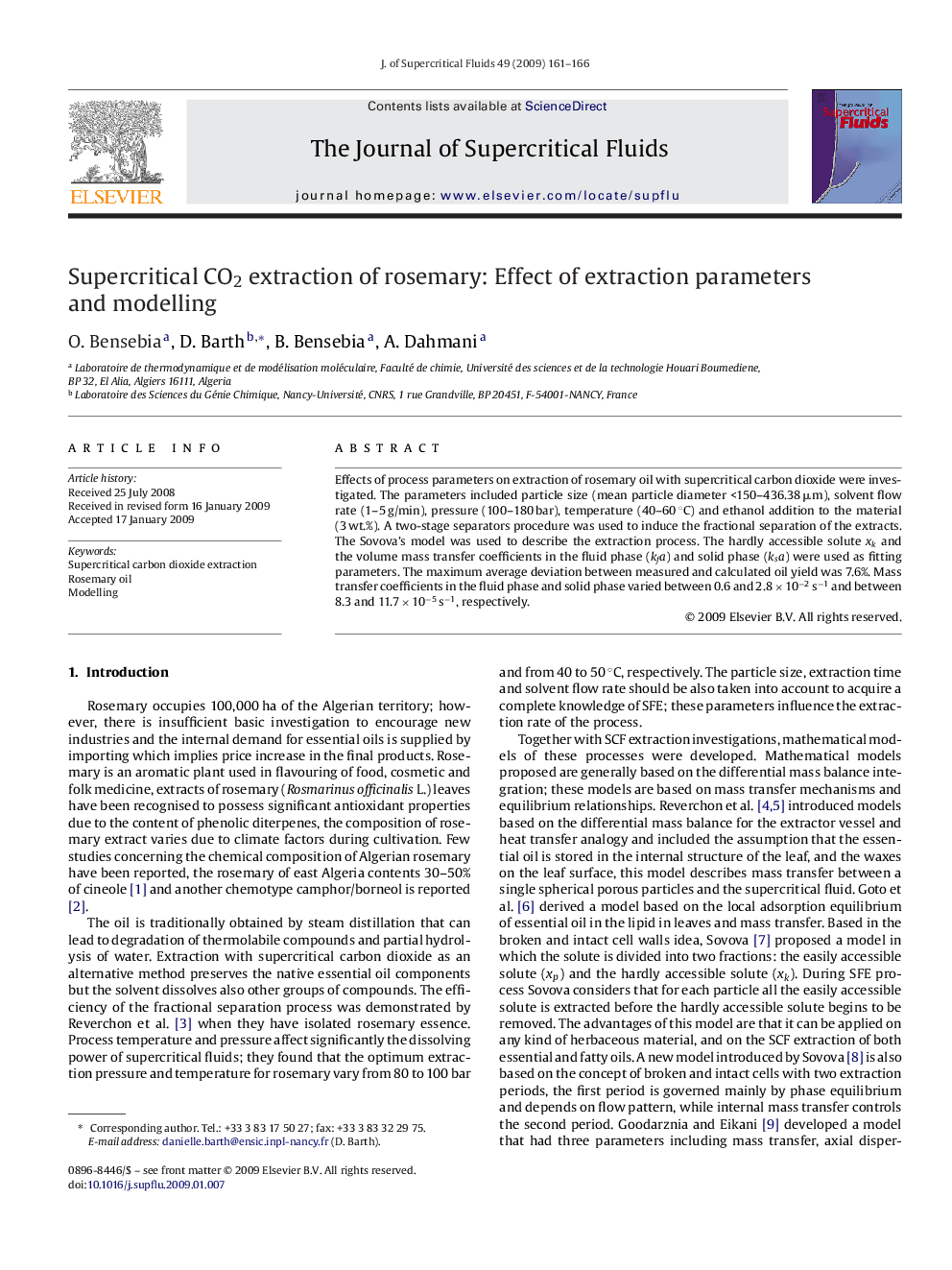| کد مقاله | کد نشریه | سال انتشار | مقاله انگلیسی | نسخه تمام متن |
|---|---|---|---|---|
| 231655 | 1427445 | 2009 | 6 صفحه PDF | دانلود رایگان |

Effects of process parameters on extraction of rosemary oil with supercritical carbon dioxide were investigated. The parameters included particle size (mean particle diameter <150–436.38 μm), solvent flow rate (1–5 g/min), pressure (100–180 bar), temperature (40–60 °C) and ethanol addition to the material (3 wt.%). A two-stage separators procedure was used to induce the fractional separation of the extracts. The Sovova's model was used to describe the extraction process. The hardly accessible solute xk and the volume mass transfer coefficients in the fluid phase (kfa) and solid phase (ksa) were used as fitting parameters. The maximum average deviation between measured and calculated oil yield was 7.6%. Mass transfer coefficients in the fluid phase and solid phase varied between 0.6 and 2.8 × 10−2 s−1 and between 8.3 and 11.7 × 10−5 s−1, respectively.
Rosemary oil was extracted at pressures of 10–18 MPa and temperature of 313–333 K with supercritical CO2. The effect of separation parameters such as temperature, pressure, CO2 flow rate, particle size and fractionation on the rate of rosemary oil were observed.Sovova's model was selected to describe the extraction process. The maximum average deviation between measured and calculated oil yield was 7.6%. The model of Sovova works quite well when the experimental OECs have a well-defined constant extraction rata at their beginning, the use of this model is limited to systems in which the solubility of the solute in the solvent is known at the pressure and temperature of the process.Figure optionsDownload as PowerPoint slide
Journal: The Journal of Supercritical Fluids - Volume 49, Issue 2, June 2009, Pages 161–166